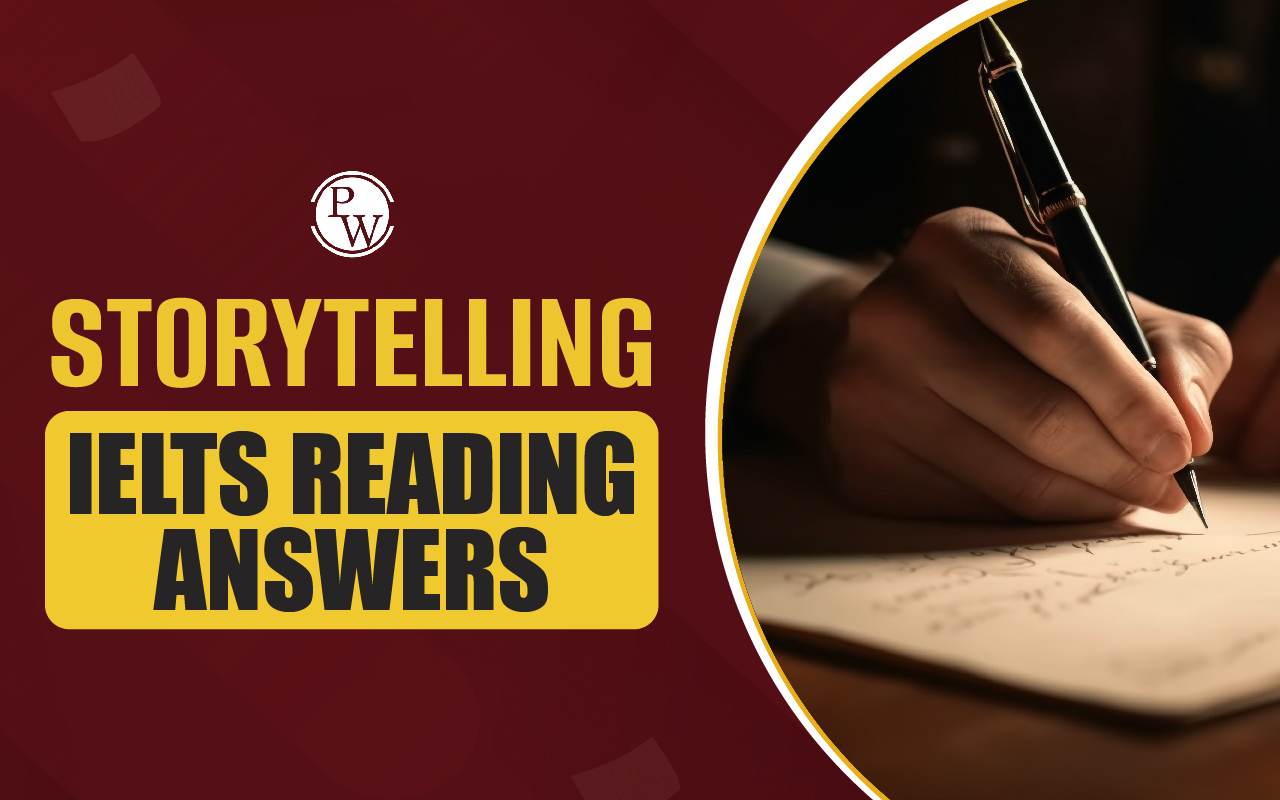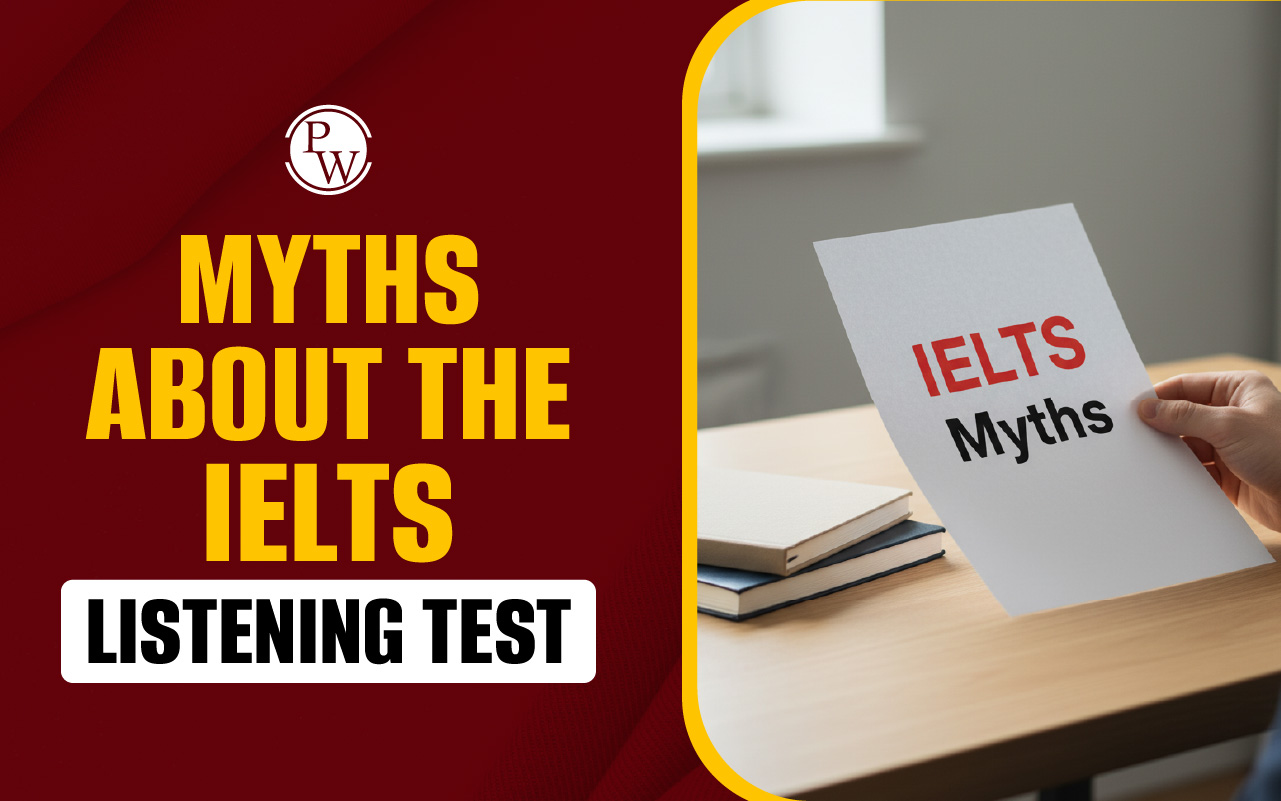

Storytelling IELTS Reading Answers: The IELTS exam contains reading passages to test a candidate's ability to comprehend key ideas, discover specific information, and decipher complicated phrases. IELTS reading sections are sometimes repetitious. As a result, practicing Storytelling IELTS Reading Answers can help candidates achieve a high IELTS Reading band score .
Storytelling IELTS Reading Answers IELTS Reading passage consists of 13 questions, including IELTS matching features and sentence endings. We've included one IELTS Reading passage on the "Storytelling IELTS Reading Answers" topic. Read the entire article to understand how to answer the IELTS Reading module passage questions, including particular tips and tactics.Free IELTS Reading Practice Tests, Cambridge Sample Test PDF
Storytelling IELTS Reading Answers Passage
Spend around 20 minutes on Questions 1-13, depending on the “Storytelling IELTS Reading Answers” Passage below.Storytelling IELTS Reading Answers
1. It was told, we suppose, to people crouched around a fire: a tale of adventure, most likely-relating some close encounter with death; a remarkable hunt, an escape from mortal danger; a vision, or something else out of the ordinary. Whatever its thread, the weaving of this story was done with a prime purpose. The listeners must be kept listening. They must not fall asleep. So, as the story went on, its audience should be sustained by one question above all. What happens next? 2. The first fireside stories in human history can never be known. They were kept in the heads of those who told them. This method of storage is not necessarily inefficient. From documented oral traditions in Australia, the Balkans and other parts of the world we know that specialised storytellers and poets can recite from memory literally thousands of lines, in verse or prose, verbatim-word for word. But while memory is rightly considered an art in itself, it is clear that a primary purpose of making symbols is to have a system of reminders or mnemonic cues – signs that assist us to recall certain information in the mind’s eye. 3. In some Polynesian communities, a notched memory stick may help to guide a storyteller through successive stages of recitation. But in other parts of the world, the activity of storytelling historically resulted in the development or even the invention of writing systems. One theory about the arrival of literacy in ancient Greece, for example, argues that the epic tales about the Trojan War and the wanderings of Odysseus – traditionally attributed to Homer – were just so enchanting to hear that they had to be preserved. So the Greeks, c.750-700BC, borrowed an alphabet from their neighbors in the eastern Mediterranean, the Phoenicians. 4. The custom of recording stories on parchment and other materials can be traced in many manifestations around the world, from the priestly papyrus archives of ancient Egypt to the birch-bark scrolls on which the North American Ojibway Indians set down their creation-myth. It is a well-tried and universal practice: so much so that to this day storytime is probably most often associated with words on paper. The formal practice of narrating a story aloud would seem-so we assume to have given way to newspapers, novels and comic strips. This, however, is not the case. Statistically, it is doubtful that the majority of humans currently rely upon the written word to get access to stories. So what is the alternative source? 5. Each year, over 7 billion people will go to watch the latest offering from Hollywood, Bollywood and beyond. The supreme storyteller of today is cinema. The movies, as distinct from still photography, seem to be an essential modem phenomenon. This is an illusion, for there are, as we shall see, certain ways in which the medium of film is indebted to very old precedents of arranging ‘sequences’ of images. But any account of visual storytelling must be with the recognition that all storytelling beats with a deeply atavistic pulse: that is, a ‘good story’ relies upon formal patterns of plot and characterisation that have been embedded in the practice of storytelling over many generations. 6. Thousands of scripts arrive every week at the offices of the major film studios. But aspiring screenwriters really need to look no further for essential advice than the fourth-century BC Greek Philosopher Aristotle. He left some incomplete lecture notes on the art of telling stories in various literary and dramatic modes, a slim volume known as The Poetics. Though he can never have envisaged the popcorn-fuelled actuality of a multiplex cinema, Aristotle is almost prescient about the key elements required to get the crowds flocking to such a cultural hub. He analysed the process with cool rationalism. When a story enchants us, we lose the sense of where we are; we are drawn into the story so thoroughly that we forget it is a story being told. This is, in Aristotle’s phrase, ‘the suspension of disbelief. 7. We know the feeling. If ever we have stayed in our seats, stunned with grief, as the credits roll by, or for days after seeing that vivid evocation of horror have been nervous about taking a shower at home, then we have suspended disbelief. We have been caught, or captivated, in the storyteller’s web. Did it all really happen? We really thought so for a while. Aristotle must have witnessed often enough this suspension of disbelief. He taught at Athens, the city where theatre developed as a primary form of civic ritual and recreation. Two theatrical types of storytelling, tragedy and comedy, caused Athenian audiences to lose themselves in sadness and laughter respectively. Tragedy, for Aristotle, was particularly potent in its capacity to enlist and then purge the emotions of those watching the story unfold on the stage, so he tried to identify those factors in the storyteller’s art that brought about such engagement. He had, as an obvious sample for analysis, not only the fifth-century BC masterpieces of Classical Greek tragedy written by Aeschylus, Sophocles and Euripides. Beyond them stood Homer, whose stories even then had canonical status: The Iliad and The Odyssey were already considered literary landmarks-stories by which all other stories should be measured. So what was the secret of Homer’s narrative art? 8. It was not hard to find. Homer created credible heroes. His heroes belonged to the past, they were mighty and magnificent, yet they were not, in the end, fantasy figures. He made his heroes sulk, bicker, cheat and cry. They were, in short, characters – protagonists of a story that an audience would care about, would want to follow, would want to know what happens next. As Aristotle saw, the hero who shows a human side-some flaw or weakness to which mortals are prone-is intrinsically dramatic.d by logging.Storytelling IELTS Reading Answers Sample Questions
Storytelling IELTS Reading Answers: Matching Headings (Questions 1-4) Match each paragraph (A-D) with the correct heading from the list below. List of Headings: i. The evolution of oral storytelling into written form ii. The connection between storytelling and visual media iii. The origin of storytelling and its primary purpose iv. Historical methods of preserving stories v. The influence of storytelling on the development of writing systems
- Paragraph A
- Paragraph B
- Paragraph C
- Paragraph D
Storytelling IELTS Reading Answers: Multiple-Choice Questions (Questions 5-8) Choose the correct answer (A, B, C, or D).5. What was the main purpose of early storytelling? A. To entertain children before they slept B. To ensure listeners stayed engaged and awake C. To preserve historical events D. To teach survival skills to younger generations 6. How did ancient Greeks contribute to storytelling preservation? A. By memorizing stories for generations B. By writing stories on scrolls C. By adopting an alphabet to record stories D. By inventing the concept of cinema 7. According to the passage, what is the most popular modern form of storytelling? A. Books and novels B. Live theatre performances C. Films and cinema D. Digital social media platforms 8. Why does the author mention Aristotle’s lecture notes? A. To highlight the historical significance of theatre B. To emphasize Aristotle’s role in shaping modern storytelling principles C. To show how screenwriters can benefit from ancient ideas D. To explain how theatre was more important than cinema
Storytelling IELTS Reading Answers: Sentence Completion (Questions 9-12) Complete the sentences below using NO MORE THAN THREE WORDS from the passage.9. In Polynesian communities, a ___________ was used to help storytellers recall the stages of recitation. 10. Homer’s heroes were appealing because they displayed ___________ that made them relatable. 11. Aristotle’s concept of _______________ explains why audiences forget they are watching a fictional story. 12. Early stories were initially preserved through _______________ rather than writing.
| IELTS Exam Important Links | |
|---|---|
| IELTS Reading Band Score | IELTS Listening Band Score |
| IELTS Speaking Band Score | IELTS Writing Band Score |
Storytelling IELTS Reading Answers Explanation
Ans 1. Paragraph A – iii. The origin of storytelling and its primary purpose- Explanation : Paragraph A talks about the origin of early storytelling emphasizing the goal of keeping listeners engaged.
- Explanation : In paragraph B, it is mentioned how storytellers could recite thousands of lines from memory. Also, how symbols and mnemonic cues helped preserve stories before writing systems existed.
- Explanation : Paragraph C states how storytelling led to the development of writing systems in Greece indicating the direct influence of storytelling on literacy.
- Explanation : Paragraph D explains, how stories were recorded on materials like papyrus and birch-bark scrolls to preserve them over time.
- Ans. B. To ensure listeners stayed engaged and awake
- Explanation : Paragraph A explicitly states that the goal was to keep listeners engaged and awake with the suspense of what happens next.
- Explanation : Paragraph C mentions how Greeks borrowed the Phoenician alphabet to record epic tales like the Trojan War, preserving these stories through writing.
- Explanation : Paragraph E states that over 7 billion people watch movies annually, positioning cinema as the dominant modern form of storytelling.
- Explanation : Paragraph F discusses Aristotle’s notes on storytelling (The Poetics), highlighting how his analysis of drama and plot still applies to modern screenwriting.
- Explanation : Paragraph C mentions that Polynesian storytellers used notched sticks to guide them through recitations.
- Explanation : Paragraph H highlights that “Homer created credible heroes. His heroes belonged to the past, they were mighty and magnificent, yet they were not, in the end, fantasy figures. He made his heroes sulk, bicker, cheat and cry.”
- Explanation : Paragraph F mentions Aristotle’s phrase “suspension of disbelief,” describing how audiences become absorbed in the story.
- Explanation : Paragraph B explains that early stories were passed down through oral traditions.
- Should You Use All Capital Letters in the IELTS Listening and Reading Tests
- IELTS Reading Mistakes
- How to Improve IELTS Reading Score
- How to Manage Time in IELTS Reading
Guidance of PW IELTS
Physics Wallah offers a few popular online IELTS courses for all students. Follow the latest IELTS articles to better prepare for the exam.| IELTS Exam Other Related Links | |
|---|---|
| IELTS Registration | IELTS Eligibility Criteria |
| IELTS Exam Pattern | IELTS Syllabus |
| IELTS Exam Dates | IDP IELTS Test Centers |
Storytelling IELTS Reading Answers FAQs
Q. Why is storytelling important in human history?
Ans. Storytelling was essential for passing down knowledge, culture, and experiences. It kept audiences engaged and preserved traditions before writing systems existed.
Q. How did storytelling contribute to the development of writing?
Ans. The need to preserve compelling stories, like Homer’s epics, led ancient Greeks to adopt writing systems around 750-700 BC.
Q. What role does cinema play in modern storytelling?
Ans. In modern storytelling, cinema plays a dominant form. Cinema uses visual narratives to engage audiences.
Q. What makes a story captivating, according to Aristotle?
Ans. According to Aristotle, emotional engagement, heroes with flaws, and suspension of disbelief concepts make a story captivating.
Talk to a counsellorHave doubts? Our support team will be happy to assist you!

Free Learning Resources
PW Books
Notes (Class 10-12)
PW Study Materials
Notes (Class 6-9)
Ncert Solutions
Govt Exams
Class 6th to 12th Online Courses
Govt Job Exams Courses
UPSC Coaching
Defence Exam Coaching
Gate Exam Coaching
Other Exams
Know about Physics Wallah
Physics Wallah is an Indian edtech platform that provides accessible & comprehensive learning experiences to students from Class 6th to postgraduate level. We also provide extensive NCERT solutions, sample paper, NEET, JEE Mains, BITSAT previous year papers & more such resources to students. Physics Wallah also caters to over 3.5 million registered students and over 78 lakh+ Youtube subscribers with 4.8 rating on its app.
We Stand Out because
We provide students with intensive courses with India’s qualified & experienced faculties & mentors. PW strives to make the learning experience comprehensive and accessible for students of all sections of society. We believe in empowering every single student who couldn't dream of a good career in engineering and medical field earlier.
Our Key Focus Areas
Physics Wallah's main focus is to make the learning experience as economical as possible for all students. With our affordable courses like Lakshya, Udaan and Arjuna and many others, we have been able to provide a platform for lakhs of aspirants. From providing Chemistry, Maths, Physics formula to giving e-books of eminent authors like RD Sharma, RS Aggarwal and Lakhmir Singh, PW focuses on every single student's need for preparation.
What Makes Us Different
Physics Wallah strives to develop a comprehensive pedagogical structure for students, where they get a state-of-the-art learning experience with study material and resources. Apart from catering students preparing for JEE Mains and NEET, PW also provides study material for each state board like Uttar Pradesh, Bihar, and others
Copyright © 2025 Physicswallah Limited All rights reserved.
Get App











